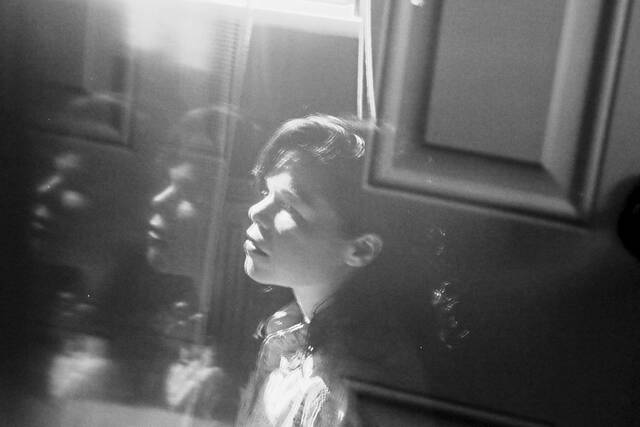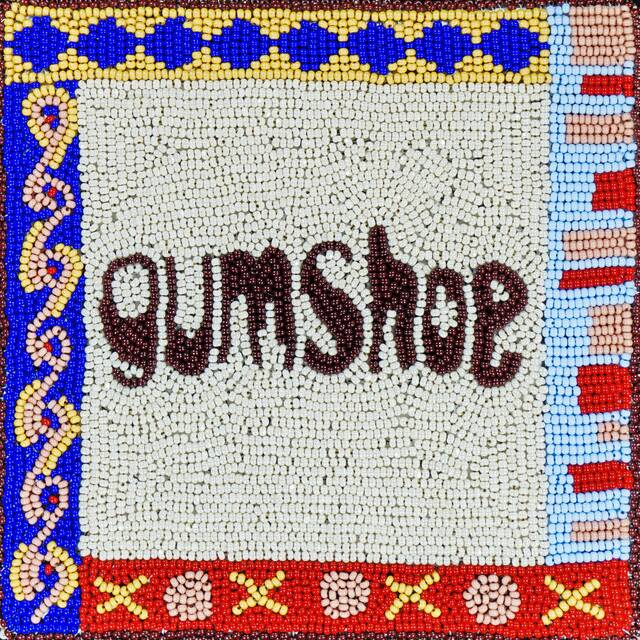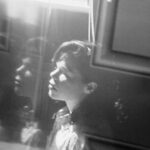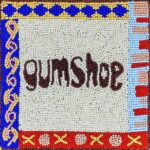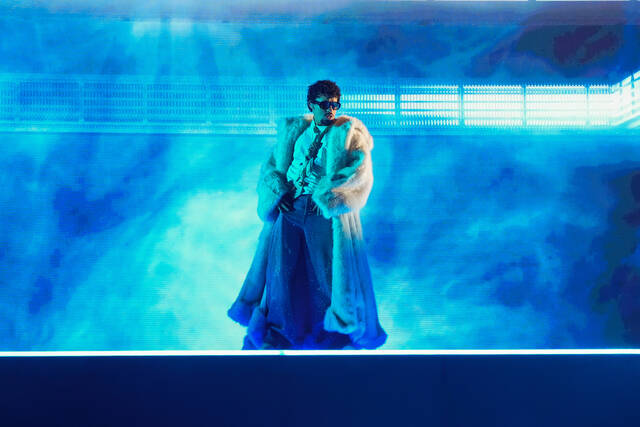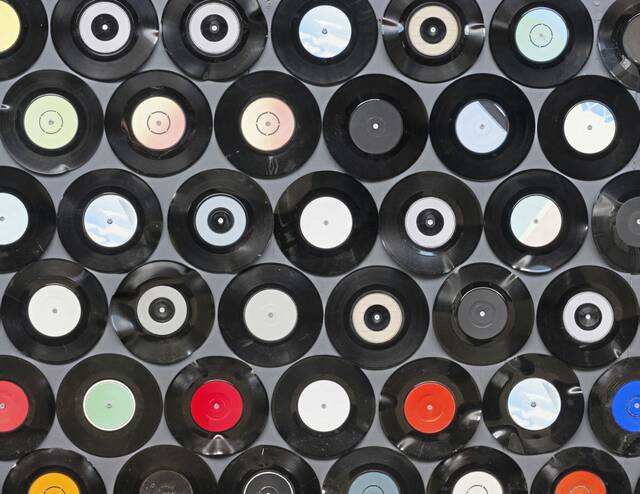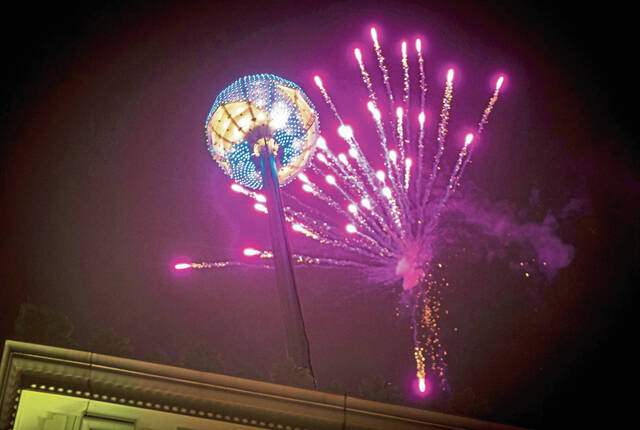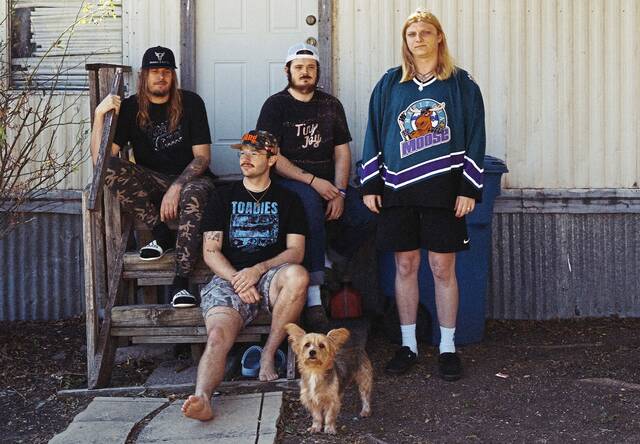For almost two decades, Samantha Crain has toured more or less as a solo singer-songwriter, and her upcoming album “Gumshoe” explores steps in a different direction.
“It’s led me to be a pretty independent person and also somebody that embodies that lone wolf mentality. The thing that I have started to notice as I get older, and especially over the past couple years, is how just not sustainable that is from not only from an artistic perspective but also just from a personal, emotional and spiritual perspective,” Crain said Monday in a Zoom call from her Oklahoma home. “When you’re doing everything yourself from an artistic view, there’s just a lot that you’re not learning, there’s a lot of untapped roads that you’re not going to go down, and so I think it stunts your creative growth and then it also stunts from a personal perspective.
“It kind of stunts your growth when you’re not having to interact with other people and become better at being a part of a community. So really, the album is about me trying to really break out of that mold of being a lone wolf, somebody that relies on themselves a lot, and starting to dip my toes into this world of inviting other people to share my life with me. So that’s the headspace that I’m coming from when I’m writing these songs.”
Some of those songs from “Gumshoe” — out May 2 on Real Kind Records — will be on tap when Crain plays a solo show on April 11 at the Andy Warhol Museum on Pittsburgh’s North Shore as part of its Sound Series program. The one-off show will serve as a precursor for her full-band national tour that kicks off in May.
A member of the Choctaw Nation, the 38-year-old Crain has won an Indigenous Music Award and several Native American Music Awards while earning critical praise for recent albums like “A Small Death” and “You Had Me At Goodbye.”
Crain has only played a handful of shows this year — including a pair of fundraisers in Alaska — so the Pittsburgh show will provide an opportunity to grow more comfortable in the news songs, albeit in a more stripped-down manner.
“It does take me a few repetitions to really get set in the songs and to where I’m getting to focus more on the performance and not so much just about remembering how things go,” she said. “And I also weirdly last year had this experience that led me to get some pretty intense stage fright, which I’ve never really experienced in my 20 years of doing this. And I’m not exactly sure exactly what the impetus was, but I’ve been working through that over the past year, just to get more comfortable on stage again and get ready for the shows this summer.”
In the Zoom call, Crain also discussed the collaborative effort of the “Gumshoe album,” mystery references and providing the score on a close-to-home documentary:
Was this more of a community effort with this album?
Yeah, definitely. Over the past couple of records, I’ve done more single tracking work where I’ll go in and lay down my parts and layer over that and then have people come in for a day or two at a time and do their part. So it really is more of a low pressure, like one person at a time recording process. But with this record, because of the subject matter of it and where my mind was, I really wanted it to be a record where me and the base band, we were all in a room together doing the bones of each song together and arranging them. I got together a band that I don’t normally play with live because they’re all in other projects, and we didn’t really have rehearsals before going to the studio. We just started with one song at a time and we would just play in a room together until we figured out what the arrangement was gonna be and the tempo and the vibe and how things were gonna sit together. And we just went one song at a time like that. So it was much more of a collaborative process than the past couple of my records have been.
Did that take some time to get used to (the more collaborative effort) if you’re used to doing it one way?
A hundred percent, yeah. I have a very specific vision about how songs are gonna sound as I’m writing them. And so you really have to let go of some of that and just trust that whatever ideas these other people have, eventually it’s gonna make the song better rather than just holding on to this idea that you have, not giving up that control. So I’m Choctaw and my tribe down here, we have a motto right now that they’re really pushing which is, “Together we’re more.” It’s this idea of if you want to go fast, go by yourself. But if you want to go far, go with each other. So I’ve really been trying to embody that into what I’m doing which is just not worrying so much about the ease of a project or something that I’m working on, not worrying about how easy it is or how little roadblocks it has, but more about trusting the outcome and that I have people to help me move through those roadblocks and through those challenges.
How do you know when these are going to be the songs for an EP vs. wanting to put 10 or 12 together for a record?
There have been moments where I focus a lot on a theme for a record and try to write songs according to that. But more and more what I find myself doing is just understanding that if a group of songs are being written in one period of my life, just by that shared timeline alone, they represent a certain point in my life. And I try to reverse engineer, I guess, see after the songs have been written, or at least the first draft of them, do a reverse psychology on what perspective am I coming from here?
And I usually do this after I’ve got five or six songs written. And then it kind of helps guide me to finishing the record. So part of it is trying to focus on a theme and writing songs for that theme. But it turns into that after I’m halfway done. I just see what perspective I’m coming from with the first few songs, and then it helps me finish the record. With the EPs, I just feel like I know when those go together, because I can feel when I start down that path and then whenever I get to the point of, OK, what do these songs have in common? And then I realize what they have in common. But then I realize I don’t have any more to say about that. (laughs) And then I’m just kind of like, OK, well, that was a succinct time period in time. So therefore, those just kind of live on their own.
Related
• mssv guitarist Mike Baggetta talks 'post-genre' music, new album ahead of Pittsburgh show• Daisy the Great discuss touring, new 'The Rubber Teeth Talk' album ahead of New Kensington show
• 2025 Pittsburgh area concert calendar
Was there a theme of mysteries or detectives? There’s “Gumshoe.” There are mentions of Nancy Drew, Sam Slade, Inspector Clouseau. Were you reading a lot of mystery novels when you were writing this?
I wasn’t while I was writing the songs, but I think whenever I got to the point of realizing that this was really about me taking a step further into this mysterious part of the human experience, which was not being a lone wolf, trying to be in relationship with other people, trying to understand people and relationships and community more and solve that mystery of the human experience, there were times that I wanted to insert detective or mystery sort of language.
Just because I think it’s lighthearted and because I can be such a heavy writer sometimes, I really need those moments of levity to just remind myself it’s not that serious. Yes, life has a lot of serious things and a lot of trials and tribulations, but also it is enjoyable, and it can be lighthearted. And so I think more so whenever I’m interjecting those more kitschy words, it’s more just as like a breath for me to be like, oh yeah, this can be kind of silly, too.
How do you view music as a means of expression? Do you look at it as your way to process the world?
I think that in the spectrum of artists, I tend to fall a little more on the cerebral side rather than the pure emotive, emotional side. But what I end up doing is, my cerebral side of trying to process my experience and the experiences of others, that happens in the actual songwriting side of things where I can write down my thoughts, try to figure out what I’m feeling, what other people are feeling and experiencing.
And then the magic part for me is when I’ve done that more cerebral, can’t-get-out-of-my-head work, of the writing of the song, then I get this great release of the performance of that, which is the vocalization of that. Singing is such an emotive action, and that’s whenever my more emotional side of myself gets to come out. So it’s kind of like the perfect solution for me to be able to still work out my cerebral nature, but also in a physical way, which I think really helps with the moving on or the processing of that emotional part of it. So for me, it’s like the perfect therapy. It’s like both sides of it. It’s the physical and the mental side of processing things that I’m living.
You just scored the documentary for “Drowned Land” so how did that come together? How important are environmental and political issues for you personally?
Colleen Thurston, who’s the director of that, and then also Michelle Svenson, who was one of the producers, I’ve been aware of their work and I’ve known Michelle for years and years and years. The indigenous arts community is so close – everyone knows everyone – and keeps up on everyone’s work, like filmmakers, artists, musicians, the whole slew of us are just very integrated. I released a song on my last record called “When We Remain,” which is a song that I wrote in the Choctaw language. And I actually wrote that song about the land that my family spent many, many years on and the land that I grew up on down in southeastern Oklahoma, which is in the Kiamichi River valley, which is the seat of our tribal headquarters in that area of Oklahoma.
I wrote that song about that land and how it affected me and gave me a certain perspective on the interconnectedness of not just people but all of nature, of being connected to the earth, the animals, the plants, the water. And Colleen heard that song and wanted to include it in this documentary that she was working on, not knowing what I wrote the song about. And we were talking about that song and what it meant to me. And she was just like, I can’t believe this, I’m making a documentary about this specific area of Oklahoma that you’ve written a song about. And I think we were just having this conversation and she just thought that it would make sense for me to do the whole score since I was so connected to that area.
I had just finished the score for a movie called “Fancy Dance” and she had heard some of that and had liked what I had done there. I went down to that area again to re-familiarize myself with it. I walked around and I made a lot of field recordings, just to kind of reacquaint myself with the area. For me, with the way that we misuse natural resources, 100% it’s because we’ve lost that connection with our actual environment. We’ve built such a man-made world around us that it’s so easy to get disconnected from our animal and our natural brothers and sisters and think of it as just another part of Earth rather than an actual thing that we are interconnected with and actually affects our mental, spiritual and physical health.
And so for me, her making this documentary about how we — well, not the Choctaw Nation, so to speak, but the people around us — are misusing this resource that means so much to us and fighting to keep that resource within our protection. That way it doesn’t become used up and poisoned and reallocated in ways that it was not meant to because it does affect the people that live there in that valley. It is sacred to them. They have a relationship with that water. They have a relationship with that land. And I do, too. I grew up down there. And so I know that from experience. So it was just like a kismet that we got to connect on that project. I was so happy that I got to help with that.


